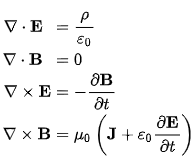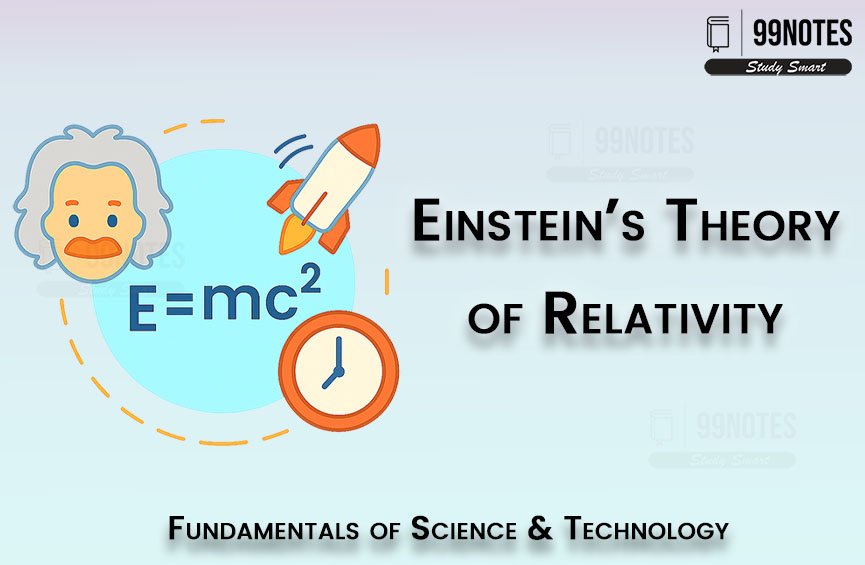Einstein’s Relativity
What is the speed of light? It’s 3X108 m/s of course. But in relation to what?
Suppose our solar system moves at 20,000 m/s through space. Would the speed of light in the direction of this motion be different from the speed of light in this direction?
How do we know about the speed of light? 
James Clerk Maxwell gave the early form of ‘Maxwell’ equations in 1861 and 1862. When we combine Maxwell’s equations we stumble upon the fact that if a wave arises from the continuous propagation of electric and magnetic fields, it would travel at a constant speed, which comes out to be 299,792,458 m/s.
This number was so close to the speed of light known at that time that it was speculated that light itself was an electromagnetic wave (emw). Apart from light, we found a whole spectrum of light-like emw.
Einstein had been dealing with the problem of the speed of light since an early age.
Special Theory of Relativity
Albert Einstein’s Special Theory of Relativity (STR), published in 1905, revolutionized the understanding of space, time, and energy. It introduced groundbreaking concepts that fundamentally altered our perception of the universe.
- The Principle of Relativity: The laws of physics are the same for all observers, regardless of their constant velocity relative to each other. This means there is no privileged or absolute frame of reference in the universe. Whether you are standing still or moving at a constant speed, the laws of physics apply equally.
- The Constancy of the Speed of Light: The speed of light in a vacuum is always constant, approximately 299,792,458 meters per second, for all observers, regardless of their motion or the motion of the light source. This was a major departure from classical physics, where velocities were believed to be additive.
Key Consequences:
- Time Dilation: Time slows down for an object moving at speeds close to the speed of light relative to a stationary observer. This means that a clock moving with a spaceship would tick more slowly compared to a clock on Earth. This phenomenon, known as time dilation, has been confirmed experimentally using atomic clocks in high-speed aeroplanes.
- Length Contraction: As an object moves faster relative to an observer, its length appears contracted (shortened) along the direction of motion. This effect becomes noticeable only at speeds approaching the speed of light.
- Mass-Energy Equivalence (E=mc²): One of the most famous results from special relativity is the equation E=mc², which shows that mass and energy are interchangeable. A small amount of mass can be converted into a tremendous amount of energy, and vice versa. This concept is central to understanding nuclear reactions, such as those occurring in the sun or in nuclear reactors.
Impact of Special Relativity:
- The theory has had profound implications in both theoretical and applied physics. It led to the development of the theory of general relativity, which extends the principles of relativity to include acceleration and gravity.
- Special relativity has practical applications, such as the Global Positioning System (GPS), where the effects of time dilation due to relative motion between satellites and Earth-bound observers must be accounted for to provide accurate positioning data.
Einstein’s Special Theory of Relativity reshaped our understanding of space, time, and energy, highlighting the interrelationship between these fundamental aspects of the universe. It remains a cornerstone of modern physics and has withstood experimental verification for over a century.
General Theory of Relativity
Albert Einstein’s General Theory of Relativity (GTR), published in 1915, is a revolutionary theory that expanded upon his Special Theory of Relativity to include the effects of gravity.
Unlike Newton’s law of gravity, which describes gravity as a force between two masses, Einstein’s theory views gravity not as a force but as a curvature of space and time (spacetime) caused by the presence of mass and energy. This concept fundamentally changed our understanding of gravity, space, and time.
- Spacetime Curvature: General relativity posits that massive objects, such as stars or planets, cause the fabric of spacetime to curve around them. This curvature tells objects how to move. Instead of viewing gravity as a force acting at a distance, Einstein suggested that objects follow curved paths (called geodesics) due to the warping of spacetime by mass.
- Equivalence Principle: The Equivalence Principle is the cornerstone of general relativity. It states that the effects of gravity are indistinguishable from acceleration. For example, an observer inside a sealed spaceship cannot tell whether the force they feel is due to gravity or the acceleration of the spaceship. This principle led Einstein to realize that gravity and acceleration are related, which ultimately led to the idea of spacetime curvature.
Consequences of General Theory of Relativity
- Gravitational Time Dilation: Time passes more slowly in stronger gravitational fields. For example, clocks near a massive object (like Earth) will tick slower compared to those farther away from it (in space). This has been experimentally verified by placing atomic clocks at different altitudes, where those at higher altitudes (further from Earth’s gravity) tick faster.
- Bending of Light (Gravitational Lensing): General relativity predicts that light passing near a massive object, like a star or black hole, will be bent due to the curvature of spacetime. This effect, known as gravitational lensing, has been observed in numerous astronomical phenomena, where light from distant stars and galaxies appears to be bent around massive objects, forming distorted images.
- Black Holes: One of the most famous predictions of general relativity is the existence of black holes. These are regions in space where spacetime is curved so intensely that not even light can escape. The idea was first proposed in the context of collapsing stars, and black holes were later confirmed through astronomical observations, such as the recent imaging of a black hole in the centre of the galaxy M87.
- Expansion of the Universe: General relativity also provides the framework for understanding the large-scale structure of the universe. Einstein’s equations predict that the fabric of spacetime itself can expand. This led to the concept of an expanding universe, which was later confirmed by observations of galaxies moving away from us, as seen in the redshift of light.
Experimental Verification:
General relativity has been confirmed through various experiments and observations:
- Deflection of Light: In 1919, during a solar eclipse, Arthur Eddington observed the bending of starlight as it passed near the Sun, confirming Einstein’s prediction.
- Gravitational Waves: In 2015, the Laser Interferometer Gravitational-Wave Observatory (LIGO) detected gravitational waves, ripples in spacetime caused by massive objects like colliding black holes, providing further evidence of general relativity.
Impact of General Relativity:
General relativity is one of the two pillars of modern physics, alongside quantum mechanics. It has fundamentally altered our understanding of the universe, providing the foundation for cosmology, astrophysics, and the study of gravitational phenomena. It is essential for the study of black holes, the behaviour of objects at high speeds and strong gravitational fields, and the large-scale structure of the cosmos.
Einstein’s General Theory of Relativity not only changed our understanding of gravity but also introduced a new way of thinking about the relationship between space, time, and mass. Its predictions have been confirmed time and again through experiments and astronomical observations, solidifying its place as one of the most successful and influential theories in physics. It continues to shape the way scientists explore the universe, from black holes to the expansion of the cosmos.






